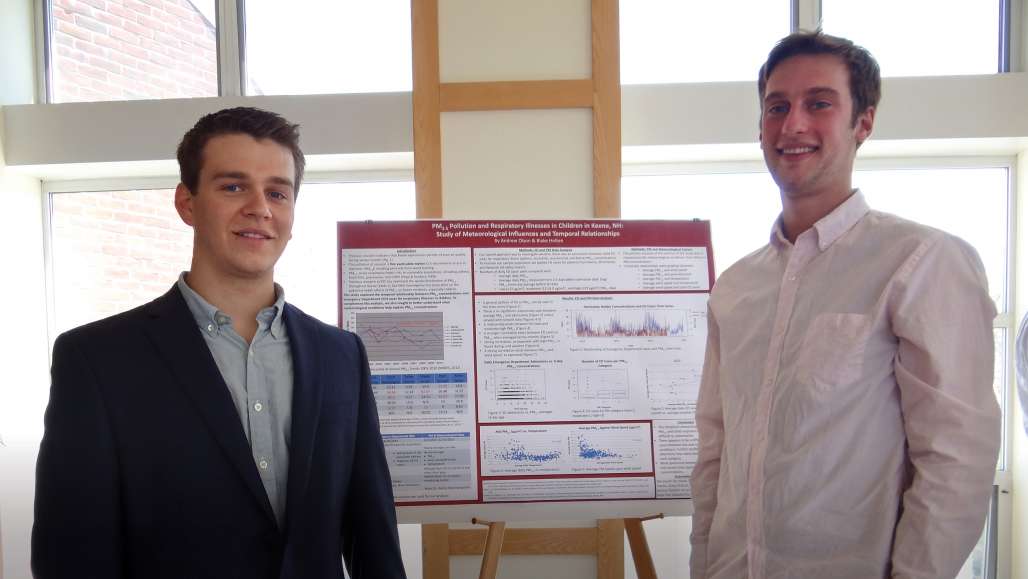Wood Smoke Has Its Hazards

For several years, environmental studies students at Keene State, working with Associate Professor Nora Traviss, have been involved in monitoring the particulate matter from residential wood burning – stoves, fireplaces, outdoor furnaces – that causes periods of poor air quality in Keene during cold, calm nights. This year, two students took the study a step further. Blake Holton and Andrew Olson, both 2015 graduates, wanted to find out if the winter air pollution linked to heating with wood has caused health problems – specifically, respiratory-related illnesses in children.
How’d they tackle that question? By tackling the data. Cheshire Medical Center supplied statistics on emergency room admissions for respiratory cases in children under 17 over the previous three years. The state Department of Environmental Services provided information on daily particulate matter concentrations, wind speed, wind direction, and temperature. Because Keene is in a valley, on cold windless days when people use wood to heat their homes, the smoke and soot that rises from chimneys tends to hang in the air, Holton notes. “When people smell wood smoke, they think it’s good,” he says. “It’s like the smell of fall – a nice bonfire smell in the air – but actually it has a lot of particulates that can be hazardous to your lungs.”
Their findings? They did track a correlation between days when the air quality was poor and emergency visits for childhood respiratory conditions, says Olson, though other factors may have contributed to the results and the sample size was small. But, he adds, “We do see that on an annual basis, the highest particulate matter concentrations are associated with the highest counts of emergency department cases.”
Their work adds to the body of research on Keene’s winter air pollution problem – it provides another piece of information to help people determine when to avoid exposure to the outside air and to encourage them to use best practices for heating with wood, including burning only seasoned wood.
“I do think that the incidence rate of asthma is really high in Keene,” says Olson, “and I don’t think that we can confidently say it’s because of particulate matter pollution, but we know that exacerbates it.”





